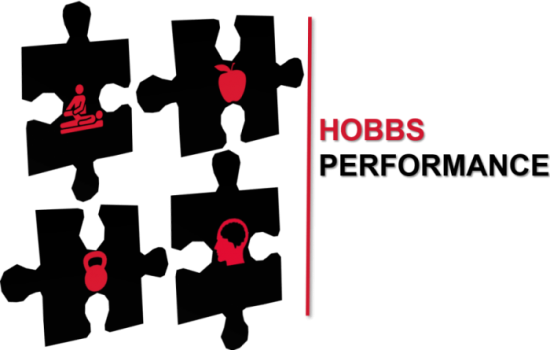In 2007 Ian Jeffreys released an article titled ‘Warm up revisited–the ‘ramp’ method of optimizing performance preparation’. His intention of writing this article was to provide coaches with a framework of how to write and conduct a warm up relevant to certain sports, and to clarify the rationale as to why we do warm ups and what the physiological and biomechanical aims of them are. It’s essential to make the most of all warm ups as, over the course of a year, an athlete might spend (at a minimum) a total of 35 hours warming up (assuming ten minutes a session, four sessions a week). Thirty-five hours is a huge amount of training time that shouldn’t be wasted – or perhaps worse, spent doing exercises with improper or injurious technique.

Jeffreys begins the article with an explanation of (physiologically) why we warm up, going into more depth that just ‘raise the heart rate’ or ‘prepare for exercise or competition’. His reasons are:
- Improve the physiological function of working muscles (faster contraction and relaxation)
- Increase rate of force development, reaction time, strength, and power (prime the central nervous system)
- Lower the viscous resistance in muscles (greater muscle temperature will warm up intramuscular fluids improving mobility)
- Increase oxygen delivery (Bohr effect/shift)
- Increased blood flow (due to higher heart rate)
- Enhanced metabolic reactions
- Prevent injury (via a number of potential mechanisms)
He also mentions that a warm up is an excellent coaching opportunity as it gives coaches a chance to improve an athlete’s mechanics in basic exercises (cueing and encouraging the athletes in a warm up may also ‘wake up’ the athletes psychologically). Personally I also use it as dynamic movement screen to watch for movement deficiencies/restrictions, imbalances, and proprioceptive issues.

The aforementioned elements are most relevant to the initial part of the warm up with the focus being on the energy system and muscular aspects of the physiological processes involved. However there are more components to include, such as joint range of motion, nervous system stimulation, and psychological preparation. To ensure these additional components are included in warm ups, Jeffreys suggests the ‘RAMP’ method. This stands for:
- Raise
- Activate
- Mobilize
- Potentiate
The raise component is based on what I’ve previously discussed in this article review so far, it’s general and doesn’t have to be specific to the exact workout or sport. Often this will include jogging, shuffling, lunging, skipping, hopping, and backpedaling, but coaches can be more inventive than this (I’ve seen wrestling S&C coaches use gymnastic movements, and weightlifting coaches use light barbell complexes or bodyweight circuits for example).
The activate and mobilize components fit together reasonably well, and have the aim of activating key muscles (for the exercise/drill) and mobilizing key joints and ranges of motion utilized in the sport. Activation exercises can include band rotator cuff movements, glute bridges, and face pulls (etc.), however if applied to a speed/agility context I would encourage the athletes remain on their feet and moving, so lateral band walks, linear band walks, and crawl variations (etc.) may be more appropriate. Mobilization exercises may be similar to what has been included in the raise or activate components; however they will generally be more dynamic and involve moving through greater ranges of motion (compared to raise/activate exercises). These exercises should become more drill/sport specific (appropriate for the specific movement patterns occurring in the sport), such as a decent volume of lunge-based movements for a squash player, or overhead squats for a weightlifter preparing to snatch.
The final component is the potentiation phase, this has two main goals – to increase the intensity of the warm up so that it blends into the workout/first drill, ensuring that the athlete/s are fully prepared to perform optimally. The second goal is to get a post-activation potentiation (PAP) effect, which aims to ‘fire up’ the central nervous system and should augment subsequent exercise performance (research into this area is largely inconclusive, even ten years after this article was published). This component can include progressive intensity sprints, jumps, throws, agility drills, or warm-up sets for lifting-based exercises.

One thing I like about this article is his suggestion of the term ‘performance preparation’, rather than using the term ‘warm up’. I think that telling an athlete simply to warm up is only asking them to do half of what is required – i.e. raise their heart rate and get warm. There are a million ways to elevate an athletes heart rate (sit them on a recumbent bike for example) however many of these methods are not conducive to improved performance. ‘Performance preparation’ or ‘movement preparation’ suggests that an athlete should not just ‘get sweaty and breathless’ but should actually prepare their body and mind for exercise or competition. This can be achieved by following the RAMP method outlined in the article.
Overall I like this article and the methodology it presents as it gives a framework for coaches to use, rather than a ‘set in stone’ approach. This allows experimentation and provides the fluidity to adapt the warm up method to the environment the coach is in.
Reference
- Jeffreys, I. (2007). Warm up revisited–the ‘ramp’ method of optimising performance preparation. UK Strength and Conditioning Association. https://www.researchgate.net/publication/280945961_Jeffreys_I_2007_Warm-up_revisited_The_ramp_method_of_optimizing_warm-ups_Professional_Strength_and_Conditioning_6_12-18
